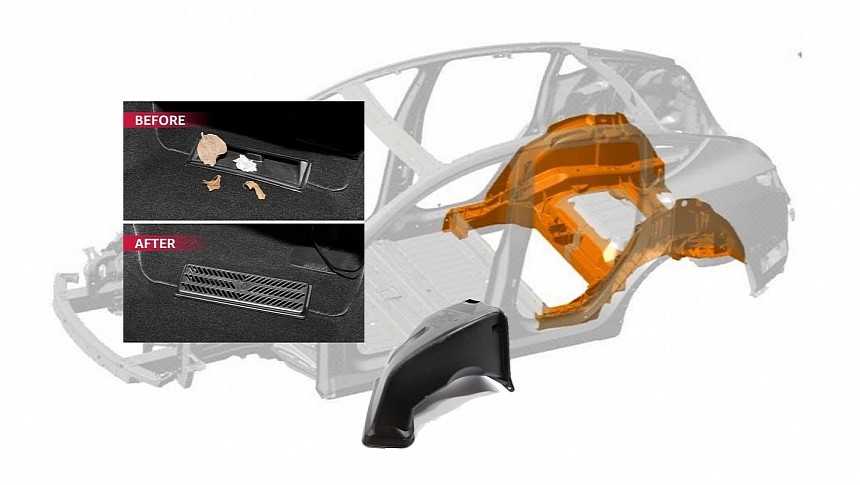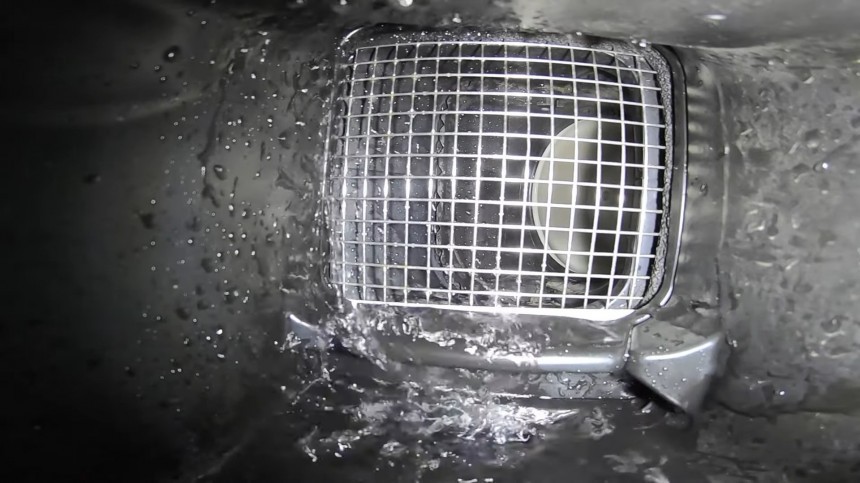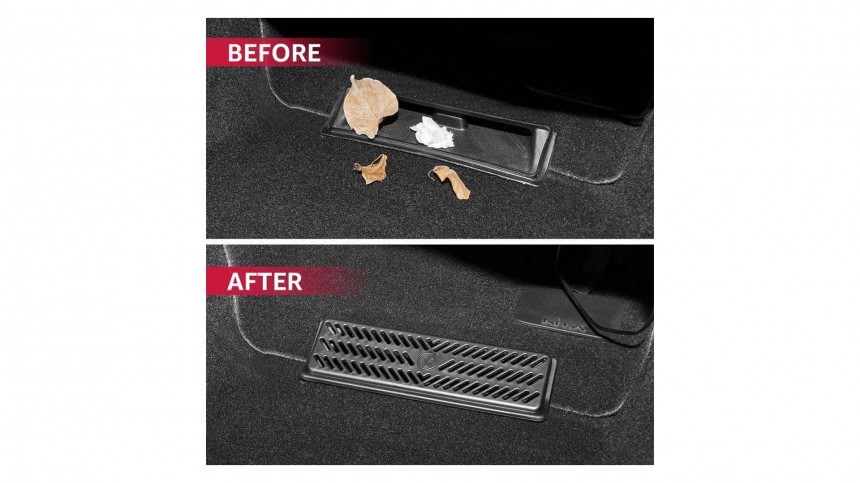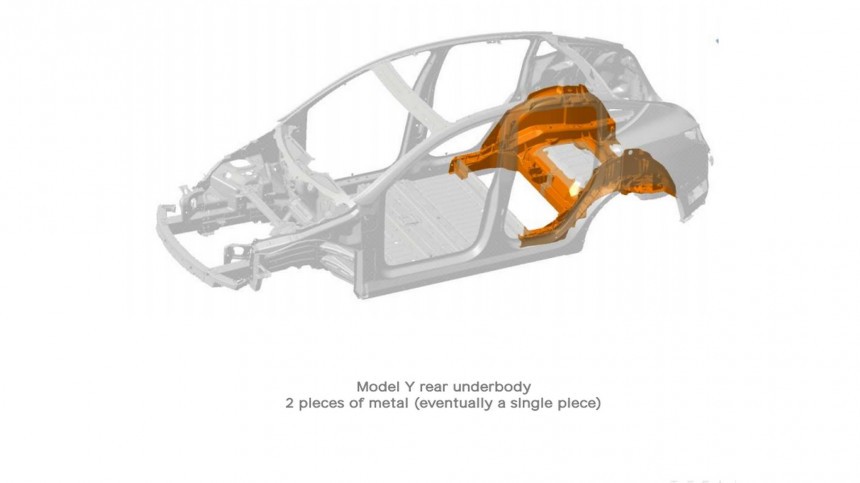Any reader who follows Tesla more closely knows the company follows the motto "deliver now, fix later." This strategy led Tesla Service Centers to get crowded, and it is all due to the company's aversion to proper testing. The battery electric vehicle (BEV) maker even released pictures of pretense tests in the desert or cold weather – with vehicles that just got out of a car wash. Yet, the truth is that it frequently gives examples that either it does not evaluate new products or fails to do so accordingly. There are at least three recent ones that clearly demonstrate that.
Cristian Agatie covered the first example recently. Adam Davenport was tired of the foul smell in a 2021 Model 3 that he seems to own. That is a frequent complaint that Model Y owners also have. They start to feel the stink inside their vehicles, replace the air filter, and the problem gets back after three or four months. Davenport investigated the origin of the bad smell and discovered that the air filters frequently get soaked. That could have been avoided if the Model 3 and the Model Y did not have such a lousy air intake design.
Unlike most vehicles, the Model 3 and the Model Y suck air directly from a grille underneath the frunk lid. All the water that drains from the windshield into that area gets sucked into the cabin. Luckily, the air filter there unwillingly works as a barrier for the water, preventing it from flooding the interior – although there are several cases of water leaks behind the glove box that may be related to the same design flaw.
Tesla's plastic air duct has a tiny water drain that seems insufficient to cope with the liquids that may get inside it. Davenport proved that was the case by using a GoPro. The negative pressure inside the duct is so strong that the water jumps the drain hole and lands into the filter – or just invades the interior of the vehicle.
Any engineer doing tests in a prototype for more than six months would have lived with the smelly feet bouquet for a while. Either nobody did that, or nobody reported the issue. Both alternatives point to an engineering failure. It is particularly embarrassing for a company that offers a Bioweapon Defense Mode in the Model S and Model X. For people with allergies, we can say that the cheaper Tesla products have a Bioweapon Production Mode instead.
The second engineering mistake is the air vents under the front seats of the Model Y and Model 3. These air vents have no cover and are large enough for quarters, AA batteries, or similarly-sized objects to fall inside them. One owner shared spending $600 to remove "some quarters that were in there" when this person bought the vehicle, which they did not mention in the Reddit thread about the issue. According to this person, the Tesla Service Center "had to take the whole interior of my frigging car apart to get some quarters out."
This person shared the air vent cover they recommended others buy, which is not currently available. Despite that, the Amazon link shows that there is a multitude of air vent covers for these Tesla vehicles. Other Reddit users asked if they should go with plastic covers or mesh. Another commenter said they managed to remove an AA battery from the air vent with an endoscope and a flexible claw grabber, urging owners to purchase these covers as soon as possible. Some were 3D printing a solution.
Finally, a story published by Autocar reveals that Tesla is trying to calm down insurance companies when it comes to repairing the massive castings it intends to adopt in all its cars. The Model Y was the first to have only three main pieces for its structure: a front casting, a rear casting, and a structural battery pack. The Cybertruck is supposed to follow the same concept.
According to Autocar, the BEV maker is aware of the concerns and is "investing in research and development to find innovative repair solutions for the 'megacast' underbody sections." Mind the present continuous tense of the verb: Tesla did not invest in research and development before making cars that way. It launched the Model Y and is now figuring out how to fix it. More than that, it aims "to develop repair techniques that are efficient, cost-effective, and maintain the structural integrity of the vehicle." What if that is not possible? Shouldn't it have done so before selling a single unit of such vehicles?
Adam Davenport makes a question in his video that is worth repeating: why did Tesla decide to do air intakes that are utterly different from those other automakers conceived? Not one or two, but all others? If you have a better solution than anybody else, you should definitely adopt it. However, what if it is just much worse and creates health issues such as moldy air filters, annoyances such as involuntary air vent rattles, and headaches like castings that currently cannot be repaired?
What some people – particularly Tesla investors – claim to be brilliant ideas actually sound like design mistakes, insufficiently tested or simply ignored. Supposing they were made on purpose, what did Tesla expect to happen when people started having problems related to them? Did it think customers would not mind replacing air filters every three or four months? That they would be okay to have their cars totaled after crashes that affected their castings? What about paying $600 to remove coins from air vents placed under the front seats?
In a desperate attempt to defend the company's flaws, one advocate once tried to argue that all Tesla owners drive prototypes, not production vehicles. One engineer also said that in the sense that no other carmaker would dare to deliver cars with so many construction and design flaws: it would be too amateurish to do so. For customers who are perfectly okay to use beta software to help Tesla develop it, it should be no big deal.
However, these recent examples of lousy engineering decisions are the first ones I can remember in which owners and tinkerers come up with better solutions than the manufacturer itself. They have put gaskets where Tesla failed to do so. They have conceived covers for air vents placed on the footwells of the rear seats, a place where children and pets will populate with anything you can imagine. They only failed to find a feasible way to repair a massive cast structure, but that would be asking too much. If you think about it, Tesla already has asked for more than it could from its customers.
Unlike most vehicles, the Model 3 and the Model Y suck air directly from a grille underneath the frunk lid. All the water that drains from the windshield into that area gets sucked into the cabin. Luckily, the air filter there unwillingly works as a barrier for the water, preventing it from flooding the interior – although there are several cases of water leaks behind the glove box that may be related to the same design flaw.
Tesla's plastic air duct has a tiny water drain that seems insufficient to cope with the liquids that may get inside it. Davenport proved that was the case by using a GoPro. The negative pressure inside the duct is so strong that the water jumps the drain hole and lands into the filter – or just invades the interior of the vehicle.
The second engineering mistake is the air vents under the front seats of the Model Y and Model 3. These air vents have no cover and are large enough for quarters, AA batteries, or similarly-sized objects to fall inside them. One owner shared spending $600 to remove "some quarters that were in there" when this person bought the vehicle, which they did not mention in the Reddit thread about the issue. According to this person, the Tesla Service Center "had to take the whole interior of my frigging car apart to get some quarters out."
This person shared the air vent cover they recommended others buy, which is not currently available. Despite that, the Amazon link shows that there is a multitude of air vent covers for these Tesla vehicles. Other Reddit users asked if they should go with plastic covers or mesh. Another commenter said they managed to remove an AA battery from the air vent with an endoscope and a flexible claw grabber, urging owners to purchase these covers as soon as possible. Some were 3D printing a solution.
According to Autocar, the BEV maker is aware of the concerns and is "investing in research and development to find innovative repair solutions for the 'megacast' underbody sections." Mind the present continuous tense of the verb: Tesla did not invest in research and development before making cars that way. It launched the Model Y and is now figuring out how to fix it. More than that, it aims "to develop repair techniques that are efficient, cost-effective, and maintain the structural integrity of the vehicle." What if that is not possible? Shouldn't it have done so before selling a single unit of such vehicles?
Adam Davenport makes a question in his video that is worth repeating: why did Tesla decide to do air intakes that are utterly different from those other automakers conceived? Not one or two, but all others? If you have a better solution than anybody else, you should definitely adopt it. However, what if it is just much worse and creates health issues such as moldy air filters, annoyances such as involuntary air vent rattles, and headaches like castings that currently cannot be repaired?
In a desperate attempt to defend the company's flaws, one advocate once tried to argue that all Tesla owners drive prototypes, not production vehicles. One engineer also said that in the sense that no other carmaker would dare to deliver cars with so many construction and design flaws: it would be too amateurish to do so. For customers who are perfectly okay to use beta software to help Tesla develop it, it should be no big deal.
However, these recent examples of lousy engineering decisions are the first ones I can remember in which owners and tinkerers come up with better solutions than the manufacturer itself. They have put gaskets where Tesla failed to do so. They have conceived covers for air vents placed on the footwells of the rear seats, a place where children and pets will populate with anything you can imagine. They only failed to find a feasible way to repair a massive cast structure, but that would be asking too much. If you think about it, Tesla already has asked for more than it could from its customers.




























